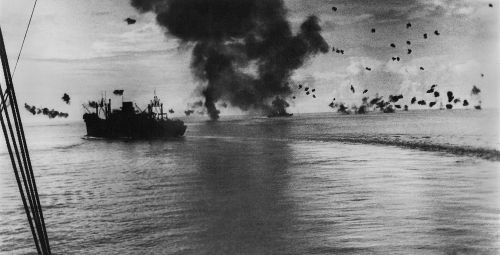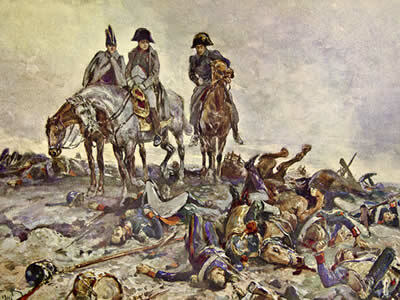Middle Ages is a period of history that begins in the middle of the fifth century (476 AD. C), with the fall of the Roman Empire from the West, and extends to the mid-fifteenth century (1453 d. C), when Constantinople invaded by Ottoman Turks.
The Middle Ages was didactically divided into High Middle Ages and low middle age. In the first 500 years there was the rise of the predominant way of life in this period, already the 500 years finals are marked by the beginning of the transformations that would lead to the end of this period and the beginning of the Age Modern.
Despite being considered the "age of darkness" by intellectuals of the subsequent period due to limited scientific and intellectual development of that time, the Middle Ages is an extensive period whose events shaped Western society current.
medieval era summary
To understand the early Middle Ages, one has to remember what was happening in Europe before the fifth century. At that time, much of Europe and also parts of Asia and Africa were part of the Roman Empire.
The Roman Empire began in 27 a. Ç. and became one of the greatest civilizations in history. For centuries, the Roman Empire exercised its power in the region, with a powerful administrative structure, armies and road structures that interconnected the territory.
From the second century onwards, peoples called by the Romans "barbarians" began to invade Roman territory, occupy regions and establish their power. During the invasions, these peoples carried out looting in the cities, which caused fear in the population, who started to flee to the countryside.
So begins the ruralization, which will determine the mode of feudal production established during the Middle Ages.
In 476 d. Ç, the Heruli - of Germanic origin - invade Rome and depose the last Emperor, Romulus Augústulo. This deposition marks the fall of the Western Roman Empire and the beginning of the High Middle Ages.
It is worth remembering that the Roman Empire had been divided into two: western and eastern. The beginning of the Middle Ages corresponds to the fall of the Western Roman Empire, the Eastern Roman Empire retains its power and will only fall at the end of the Middle Ages.
High Middle Ages
The High Middle Ages begins with the fall of the Western Roman Empire and until the end of the 10th century. The beginning of the Middle Ages is marked by the return of people to the countryside, fleeing the barbarian invasions into Roman territories.
To protect themselves, people formed fortified nuclei around properties, where the owner exercised power and offered land in exchange for protection from invaders.
From this organization emerged the feuds and the feudal mode of production, which was predominant and reached its peak in the High Middle Ages. At the feudalism, landlords offered part of the land to other nobles in exchange for services and protection.
This system was known as suzerainty and vassalage, in which the suzerain was the one who offered land and the vassal the one who received it. In addition, there were the servants, who lived on the land and owed obligations, taxes and services to the feudal lord.
Within these properties, people lived in subsistence, that is, they produced what they needed to live, in this way, the commercial activities that were already common in the Roman Empire, lost importance.
THE political organization feudal was decentralized, this means that there was no king or emperor for a whole territorial extension. There were landlords, who exercised power only within their territories, where they could levy fees and taxes.
THE most powerful institution from the Middle Ages was the Catholic church. Despite having emerged during the Roman Empire, it was in the medieval period that its power was consolidated and was from that power she would, centuries later, exercise power over much of the Western world.
Learn more about feudalism and yours features.
low middle age
From the 11th century onwards, however, some changes in European society will lead to the beginning of the crisis of the feudal system, which marks the beginning of the Low Middle Ages:
- The development of new agricultural techniques leads to an increase in agricultural production.
- Demographic growth, which led to population surplus.
At this moment, the Catholic Church calls the Crusades, which were expeditions organized by the Catholic Church with the declared aim of freeing the Holy Land from Muslim rule.
It is known, however, that there were other interests in carrying out the crusades. One was the displacement of Europe's population surplus, as there was an imbalance between food production and population growth.
Another objective was also the conquest of lands in the east, especially by those nobles who had lost their lands in European territory. And finally, there were commercial interests between the West and the East, what we call commercial renaissance.
Products brought from the Orient were traded in Europe and it is at this time that fairs appear, which were located especially in cities close to the Mediterranean Sea. Genoa and Venice were the cities that stood out in this type of trade.
With the strengthening of commerce, the inhabitants of the countryside move to the cities and form the villages. You boroughs they are the beginning of re-urbanization and it is from these places that, centuries later, the new social class called the bourgeoisie will emerge, composed of artisans, bankers and merchants.
know more about Saint war and the Crusades.
The Black Death and the Hundred Years War
In addition to all the changes that European society was going through at the end of the Middle Ages, others events rocked Europe in the last years of that period, especially the Black Death and the War of the One hundred years.
The Black Death was a disease transmitted by rats that wiped out a third of the entire European population. It is believed that the plague was brought from Asia in 1331 on ships and spread to Europe after their arrival in ports.
The Hundred Years War (1337-1453) was another episode in the late Middle Ages that caused much turmoil. This conflict was fought between France and England and had a high destructive power. In addition to many deaths, this war devastated French agricultural production.
End of Middle Ages
All changes in the structures of European society weakened the feudal regime and paved the way for the next phase of history: the Modern Age.
The end of the Middle Ages is officially considered the year of 1453, When the Ottoman Turks conquer the city of Constantinople and overthrow the Eastern Roman Empire, also known as the Byzantine Empire.
The Year of 1492, with the arrival of Christopher Columbus on the American continent, is also considered a milestone for the end of the Middle Ages.
Age of darkness
The Middle Ages were considered by some modern age intellectuals as the "Dark Ages", due to the decline in intellectual, artistic and scientific production in relation to the period of the Greeks and Romans. For Enlightenment and Renaissance thinkers, during the Middle Ages, the Catholic Church would have impeded the development of knowledge.
Today it is understood how prejudiced the name of the Dark Ages, because during this long period important advances took place, especially in the development of agricultural production.
Furthermore, it was during the Middle Ages that the first universities emerged and important artistic movements such as the Gothic and the Romantic were also developed.
See also the meaning of Enlightenment and Rebirth.


